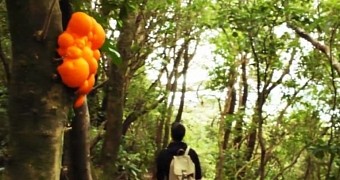Hiking can be a fun activity, but it can also turn dangerous and scary if you manage to get lost. It often falls to rangers and search & rescue crews to retrieve those that never returned from the wilderness. Assuming they were still alive when they were found.
A good supply pack, and knowing the lay of the land and experienced supervision usually counters the risks of never finding your way back from a forest, swamp, jungle, cave system or whatever else.
Having a satellite phone with you is probably a good idea too. However, it's still possible to end up stranded or otherwise incapable of returning to civilization.
Smartphones have made it easier to get in touch with S&R authorities in such cases, assuming you weren't negligent enough to leave with half-depleted charge or to play games enough that even a full one winds up powerless.
Matt Hagedorn of the Victoria University of Wellington wanted to build on the widespread use of smartphones and other handsets, so he created 3D printed trail markers.
The 3D printed trail markers become part of nature
The idea goes like this. A ranger, forest guide or someone else who is well acquainted with a certain outdoor area goes through the wilderness and takes 3D scans of key spots along the most often follower trails, and maybe some less often covered.
The 3D scans are then used in CAD software to create 3D models for trail markers that can be placed on a tree trunk, a cliff side, a river bank or other spots without damaging the bark, stone or whatever else.
The trail market is non-intrusive and non-damaging to nature, basically, but still very obviously there. Moreover, they are meant to integrate GPS data transmitters and maybe memory stores.
The memory banks would store information on local wildlife and vegetation, natural history, signage info, track into and even local lore. All this information would be accessible via a smartphone app, along with global positioning data.
A final function is that the tourists actually exploring the place can help improve the system by suggesting new spots for markets and making scans of those locations themselves.
The implications
The potential for hiking is considerable, as the 3D printed markets can increase safety greatly, as well as fun and knowledge. Being capable of interacting with something along your path might even soothe the disappointment of not spotting any deer or squirrels too. And since the markers are biodegradable, there's nothing for naturalists to complain about either.

 14 DAY TRIAL //
14 DAY TRIAL //